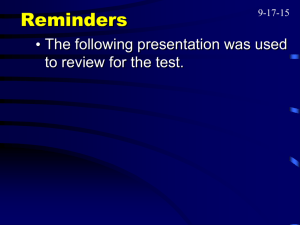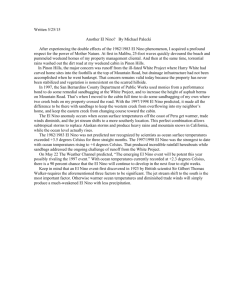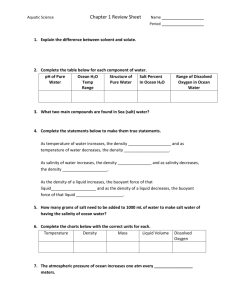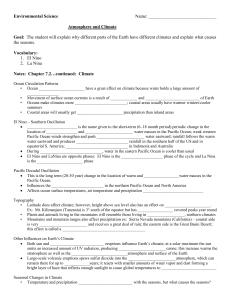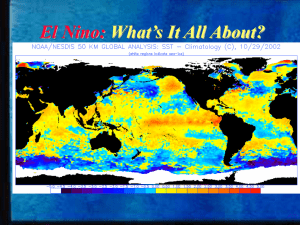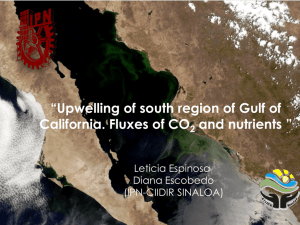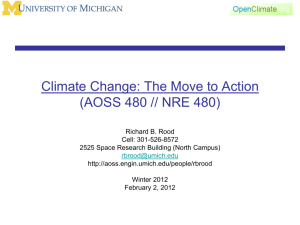Review Sheet: Questions and Clues You do not have to hand this in
advertisement
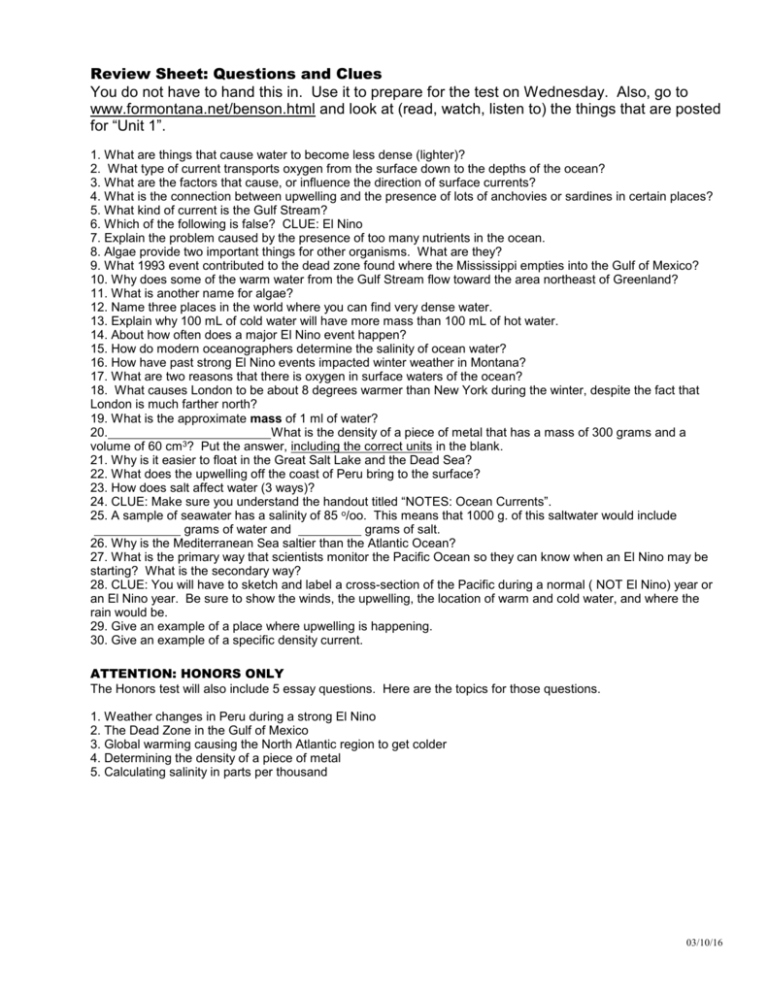
Review Sheet: Questions and Clues You do not have to hand this in. Use it to prepare for the test on Wednesday. Also, go to www.formontana.net/benson.html and look at (read, watch, listen to) the things that are posted for “Unit 1”. 1. What are things that cause water to become less dense (lighter)? 2. What type of current transports oxygen from the surface down to the depths of the ocean? 3. What are the factors that cause, or influence the direction of surface currents? 4. What is the connection between upwelling and the presence of lots of anchovies or sardines in certain places? 5. What kind of current is the Gulf Stream? 6. Which of the following is false? CLUE: El Nino 7. Explain the problem caused by the presence of too many nutrients in the ocean. 8. Algae provide two important things for other organisms. What are they? 9. What 1993 event contributed to the dead zone found where the Mississippi empties into the Gulf of Mexico? 10. Why does some of the warm water from the Gulf Stream flow toward the area northeast of Greenland? 11. What is another name for algae? 12. Name three places in the world where you can find very dense water. 13. Explain why 100 mL of cold water will have more mass than 100 mL of hot water. 14. About how often does a major El Nino event happen? 15. How do modern oceanographers determine the salinity of ocean water? 16. How have past strong El Nino events impacted winter weather in Montana? 17. What are two reasons that there is oxygen in surface waters of the ocean? 18. What causes London to be about 8 degrees warmer than New York during the winter, despite the fact that London is much farther north? 19. What is the approximate mass of 1 ml of water? 20. What is the density of a piece of metal that has a mass of 300 grams and a volume of 60 cm3? Put the answer, including the correct units in the blank. 21. Why is it easier to float in the Great Salt Lake and the Dead Sea? 22. What does the upwelling off the coast of Peru bring to the surface? 23. How does salt affect water (3 ways)? 24. CLUE: Make sure you understand the handout titled “NOTES: Ocean Currents”. 25. A sample of seawater has a salinity of 85 o/oo. This means that 1000 g. of this saltwater would include grams of water and grams of salt. 26. Why is the Mediterranean Sea saltier than the Atlantic Ocean? 27. What is the primary way that scientists monitor the Pacific Ocean so they can know when an El Nino may be starting? What is the secondary way? 28. CLUE: You will have to sketch and label a cross-section of the Pacific during a normal ( NOT El Nino) year or an El Nino year. Be sure to show the winds, the upwelling, the location of warm and cold water, and where the rain would be. 29. Give an example of a place where upwelling is happening. 30. Give an example of a specific density current. ATTENTION: HONORS ONLY The Honors test will also include 5 essay questions. Here are the topics for those questions. 1. Weather changes in Peru during a strong El Nino 2. The Dead Zone in the Gulf of Mexico 3. Global warming causing the North Atlantic region to get colder 4. Determining the density of a piece of metal 5. Calculating salinity in parts per thousand 03/10/16
